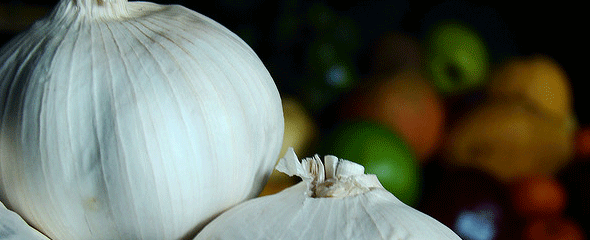
They don’t celebrate Halloween in Romania, not as you’d think. There will be some bars and nightclubs organizing Halloween specials, and in Sighisoara you’ll find a number of enthusiasts wearing vampire costumes – after all, this is where good-old Dracula was born. Adventure Transylvania has already begun its “Dracula tour” on October 28 – maybe you should bookmark this site for a future adventure.
So, aside the commercial implications, Halloween doesn’t mean much in Romania. They have St. Andrew’s Day, the national saint of Romanians and Romanian Orthodox Church. Then, they have St. Andrew’s Night (Noaptea Sfântului Andrei), which is November 29th, or the “night of the vampires” as they call it…

Romanians believe that during the night, vampires and “strigoi” (the undead) are coming out to fight and dance at the crossroads or near abandoned houses. In some villages young people gather at a common location to celebrate the occasion by “guarding the garlic.” They prepare their location grazing all access windows and doors with garlic. Each young girl is required to bring three cloves of garlic along. These are put together in a pot, and are guarded by the oldest woman in the house at candlelight. The party lasts all night. At dusk, the young folk take the pot of garlic outside and dance around it. The garlic is then split between the participants, and becomes a “sacred symbol” that will guard families against illness or spells.
There are a number of other interesting beliefs and superstitions. For example, they say that people who work on St. Andrew’s Day may be unlucky. They also believe that during St. Andrew’s Night animals speak with human voices, but people should not be listening to their conversations because they’ll die.

Girls can find their future husbands… or at least they can “see” them. This can be done in a number of ways, depending on local traditions. In some parts of Romania, young girls go to a fountain with a candle and look inside – they will see the faces of their future husbands reflected in the water inside. To dream the future husbands, girls put 41 grains of wheat each under their pillows. If they dream that the wheat is stolen, they will get married soon.
Interestingly, St. Andrew is also the patron of the wolves, and a protector to people who have been attacked by these animals. Romanians also believe that Saint Andrew (named Sfântul Apostol Andrei) was the first who preached Christianity in Scythia Minor, modern Dobrogea, to the native people of the Dacians (ancestors of the Romanians).

This is the cave where St. Andrew apparently preached – in Dobrogea, Ion Corvin, Constanța.

Feature image, (garlic) courtesy